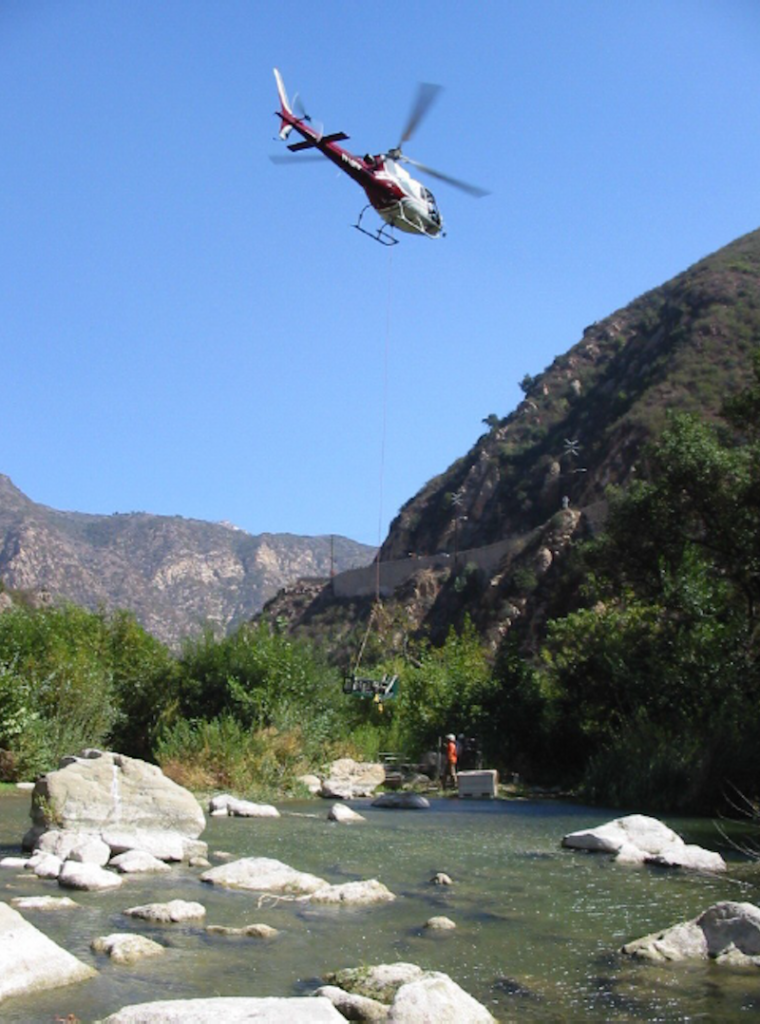
The Malibu Creek Ecosystem Restoration Project (MCERP) team is using helicopters to deliver equipment to the old Rindge Dam site in Malibu Creek.
The instruments being airdropped will be used to conduct geotechnical studies between approximately September 11 and October 7, as part of the pre-construction, engineering, and design (PED) phase of the Rindge Dam removal.
The canyon is so deep, steep, and narrow, that helicopters were the only practical option for safely delivering the equipment.
“Geotechnical investigations of the soil behind Rindge Dam will help us better understand the physical and chemical properties of the sediment that has built up behind the dam. This will give us a clearer idea of what material might be suitable for placement offshore for beach nourishment and what might be suitable for upland disposal” said R.J. Van Sant, MCERP Project Manager and Senior Environmental Scientist.
“In addition, we’ll be conducting geotechnical investigations of several upstream barriers along Cold and Las Virgenes Creeks that are part of the larger project; however, those are much less involved and don’t require equipment to be brought in via helicopter.”
State Parks, along with a team of consultants and partners from McMillen, LLC, Stillwater Sciences, Geosyntec Consultants, Moffat and Nichol, and California Trout (CalTrout), will be participating in the sampling studies and public outreach during the investigation.
The David Brown Overlook on Piuma Road above the dam site will be closed to public access from approximately September 4 through September 11 and October 2 through October 10, but traffic impacts are expected to be minimal at the staging areas while the work is being performed.

The MCERP includes the removal of the decommissioned Rindge Dam along Malibu Creek, removal of approximately 780,000 cubic yards of sediment behind the dam, and modification/removal of eight upstream barriers along Las Virgenes and Cold Creeks within the Malibu Creek watershed. When completed the project will restore creek ecosystem functions and increase habitat connectivity, including opening 15 additional miles of stream habitat for the endangered southern California steelhead (Oncorhynchus mykiss), improve climate resiliency, and restore natural sediment transport processes that will nourish our beaches with vital sand.
The project will also improve public safety by removing the obsolete dam where serious injuries and fatalities have occurred from park visitors jumping off the dam’s spillway.The target date for completion of the PED phase is the end of 2026. To obtain more project information, visit www.parks.ca.gov/MCERP and www.restoremalibucreek.org. For questions about the project email restoremalibucreek@parks.ca.gov.




